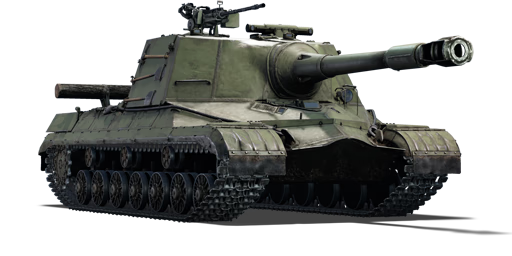



The Object 268 is an experimental Soviet tank destroyer built on the chassis of the T-10 tank. It was developed as a replacement for the aging ISU-152. The prototype was completed in 1956 and underwent state trials. The M-64, its main gun, was notable for being one of the first Soviet guns equipped with a muzzle brake. However, by the time testing concluded, the British had already begun mass-producing the Chieftain, and the Americans had the M60. The Object 268 was ineffective against both tanks. For this reason, the Object 268 was never adopted, and only one prototype was produced.
The Object 268 was introduced in the Update 1.69 "Regia Aeronautica". With its powerful gun and effective rangefinder, it is well-suited for second- and third-line positions. However, its large size and outdated armor make it unsuitable for frontline engagements, despite its thickness.
| Ammunition | Type | Armor penetration (mm) at a distance: | |||||
|---|---|---|---|---|---|---|---|
| 10 m | 100 m | 500 m | 1000 m | 1500 m | 2000 m | ||
| HE | 49 | 49 | 49 | 49 | 49 | 49 | |
| APHEBC | 239 | 237 | 225 | 211 | 198 | 186 | |
| HEAT | 250 | 250 | 250 | 250 | 250 | 250 | |
| Belt | Belt filling | Armor penetration (mm) at a distance: | |||||
|---|---|---|---|---|---|---|---|
| 10 m | 100 m | 500 m | 1000 m | 1500 m | 2000 m | ||
| API-T/AP-I(c)/API-T/IAI | 49 | 46 | 34 | 23 | 16 | 11 | |












Mobility | |
|---|---|
Protection |
|---|
Firepower | ||
|---|---|---|